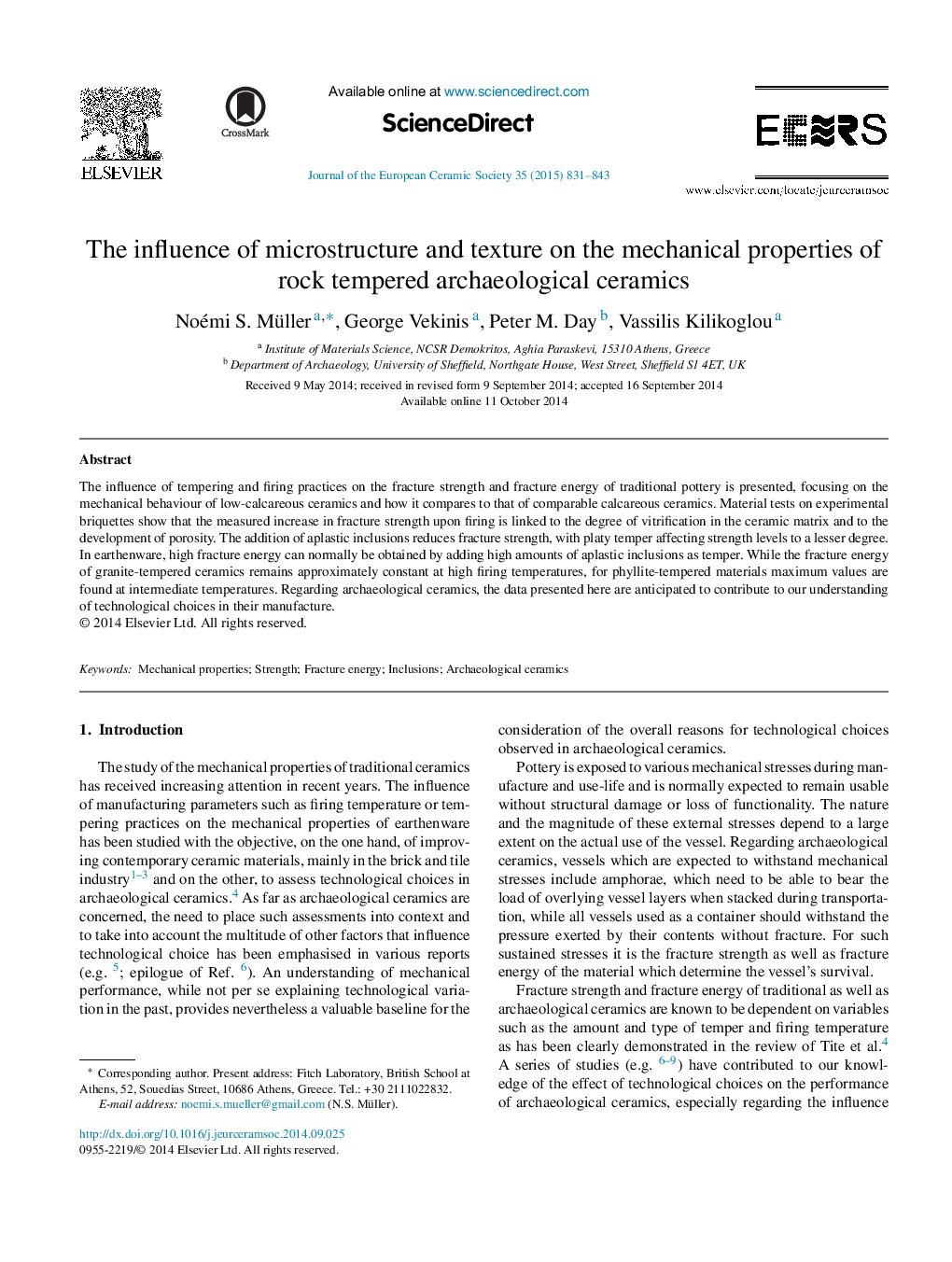| Article ID | Journal | Published Year | Pages | File Type |
|---|---|---|---|---|
| 1474655 | Journal of the European Ceramic Society | 2015 | 13 Pages |
The influence of tempering and firing practices on the fracture strength and fracture energy of traditional pottery is presented, focusing on the mechanical behaviour of low-calcareous ceramics and how it compares to that of comparable calcareous ceramics. Material tests on experimental briquettes show that the measured increase in fracture strength upon firing is linked to the degree of vitrification in the ceramic matrix and to the development of porosity. The addition of aplastic inclusions reduces fracture strength, with platy temper affecting strength levels to a lesser degree. In earthenware, high fracture energy can normally be obtained by adding high amounts of aplastic inclusions as temper. While the fracture energy of granite-tempered ceramics remains approximately constant at high firing temperatures, for phyllite-tempered materials maximum values are found at intermediate temperatures. Regarding archaeological ceramics, the data presented here are anticipated to contribute to our understanding of technological choices in their manufacture.
